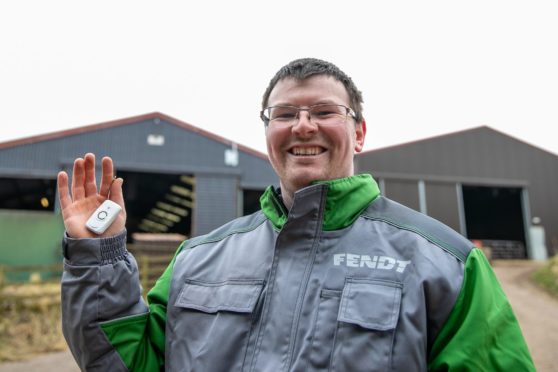Three Scottish farm business have been convinced that digital technology is the way forward for the industry, following a pilot project using smart sensors.
SAOS, SmartRural, Nature Scotland and RSABI organised and supported the project and recently shared the results via a webinar.
The Brown family farm 2,500 acres of potatoes and cereals across north-east Fife and Perthshire from their base at Inverdovat, Newport-on-Tay. They also have a small flock of sheep. They took part in the project as they consider agri-tech a route to improving performance.
Among the sensors they trialled was a weather station, which Robbie Brown said allowed him to plan and make decisions about tasks for the eight staff each day.
The soil temperature and moisture sensors also led to easier decision-making and he believes it would ultimately save money by ensuring fertiliser spreading and irrigation operations can be carried out at the optimum time.
He said: “During the one-year trial, most of the advantages were lifestyle ones such as peace of mind and better use of time, however I think as the data builds, we will see a financial benefit too.”
Peter Robertson and Elaine Booth farm 1,400 acres over two units at Ednie Farms, St Fergus, Aberdeenshire. They used a variety of technology on the arable, livestock and woodland enterprises and set up a local steering group to share information.
One of the challenges they had was poor internet and mobile phone signal, so two base stations were set up which gave whole farm coverage. They believe the use of sensors improved productivity and efficiency on the farms while reducing waste and thus emissions.
Elaine said: “We feel it is important that farmers have ownership of the data collected so they can make use of it, and as this technology is rolled out across the country, it will not only be good for farmers but also for Scotland.”
Neil and Debbie McGowan farm 1,200 acres at Incheoch, Alyth. This predominantly livestock farm trialled silage effluent tank monitors and river level sensors as well as a vaccine fridge sensor.
Debbie said: “Sometimes we can have as much as £2,000 worth of vaccines stored in the fridge. It has to be kept at the optimum temperature, so a simple alarm system on the phone can prevent a disaster.”
One aspect of the project created more interest than any other, according to Jim Booth of SAOS, and that was the lone worker alarm.
All three of the trial farms found this to be an excellent tool which gave them peace of mind when working alone.
Even in an area with poor phone signal, double-clicking the button kicked off a sequence of calls via the base station until the person was either contacted or located.
